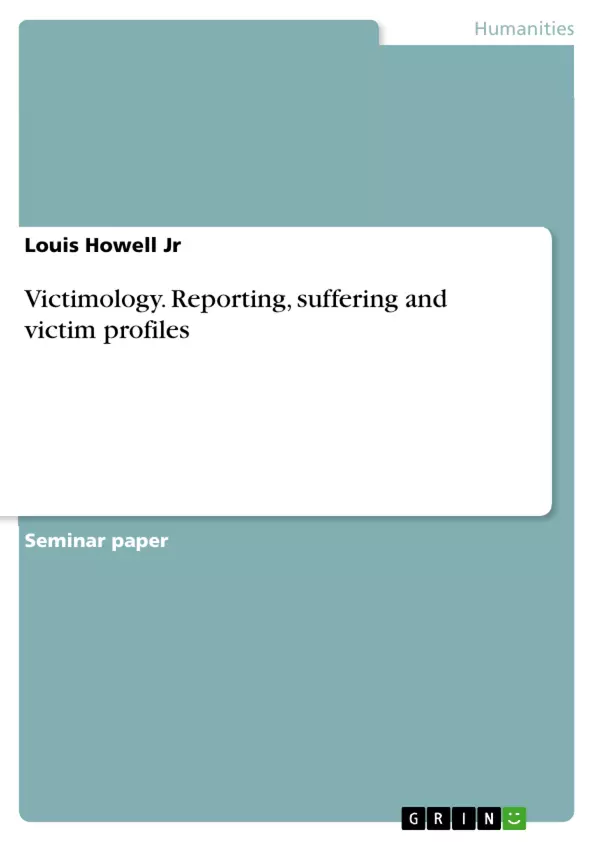As noted by Karmen (2013), media coverage has given victims with firsthand experiences a public platform to campaign for wider societal reforms. The Curleys was given national attention to their pain when their 10-year-old son, Jeffrey Curley, was murdered.
However, media are in a profit-oriented business. While the media's coverage brought national attention to the horrific crime, at the same time the media benefited from the coverage as well. The media needs advertisers and readers. Jeffrey's murder provided just that. "Shocking stories attract readers, listeners, and viewers," Karmen noted (p. 43). "Blaring headlines, gripping accounts, colorful phrases, memorable quotes, and other forms of media hype build the huge audiences that enable media enterprises to charge advertisers high rates."
Karmen went on to note that producers, editors, and reporters who seek to play up the human-interest angle may exploit the plight of persons who have suffered devastating wounds and losses, having found that crime stories attract a lot more notice if they are spiced up with a heavy dose of sex, gore, and raw emotions.
As noted by Macquarrie (2009), the phone constantly rang. "Reporters from all of the Boston media outlets asked for interviews," noted Macquarrie (p. 62) of the book entitled "The Ride."
The Curley's ordeal fits this mode.
The media gathered outside the Curley's house when news broke about Jeffrey's disappearance. According to Macquarrie (p. 62), "The news media's interest grew exponentially. Dozens of reporters had begun gathering outside the house by midafternoon, local television trucks had secured the few remaining parking spaces near the home. Microphones and notebooks seemed to be everywhere, and Jeffrey Curley's name, as well as his Little League pictures, began appearing regularly on TV throughout Greater Boston."
Inhaltsverzeichnis (Table of Contents)
- I. REPORTING AND SUFFERING
- II. VICTIM PROFILES AND VICTIM FAMILY PROFILES
- III. FURTHER VICTIMIZATION
- IV. SHARE RESPONSIBILITY
- V. HARMFUL ACTIVITIES BY OTHER SOCIAL GROUPS AND INSTITUTIONS
- VI. RESTORATIVE JUSTICE?
Zielsetzung und Themenschwerpunkte (Objectives and Key Themes)
This text explores the case of Jeffrey Curley, a 10-year-old boy who was murdered, and examines the role of media coverage, victim profiles, and societal factors in the tragedy. It delves into the impact of victimization on both the victim and his family, exploring themes of vulnerability, shared responsibility, and restorative justice.
- The role of media in victimization and the impact of media coverage on the Curley family.
- Analyzing the vulnerability of children to abuse and the factors that contribute to their vulnerability.
- Examining the family dynamics and societal factors that may have contributed to Jeffrey Curley's death.
- Exploring the concept of shared responsibility in victimization.
- Investigating the potential for restorative justice in cases of victimization.
Zusammenfassung der Kapitel (Chapter Summaries)
- I. REPORTING AND SUFFERING: This chapter examines the role of media in reporting on victimization. It uses the case of Jeffrey Curley to illustrate how media coverage can both bring attention to a tragedy but also exploit the suffering of the victim and their family for profit.
- II. VICTIM PROFILES AND VICTIM FAMILY PROFILES: This chapter analyzes the profile of the victim, Jeffrey Curley, and his family. It explores the factors that made him vulnerable to abuse and the family dynamics that may have contributed to his death.
- III. FURTHER VICTIMIZATION: This chapter discusses the secondary victimization that occurred to both the victim and his family after his death. It highlights the insensitive treatment they faced from the media and society.
- IV. SHARE RESPONSIBILITY: This chapter explores the concept of shared responsibility in victimization. It examines the actions of the perpetrators, the victim's own behavior, and the role of the family in contributing to the tragedy.
Schlüsselwörter (Keywords)
The text focuses on the keywords: victimization, media coverage, vulnerability, child abuse, family dynamics, shared responsibility, restorative justice, and the case of Jeffrey Curley.
- Quote paper
- Louis Howell Jr (Author), 2014, Victimology. Reporting, suffering and victim profiles, Munich, GRIN Verlag, https://www.hausarbeiten.de/document/293223


